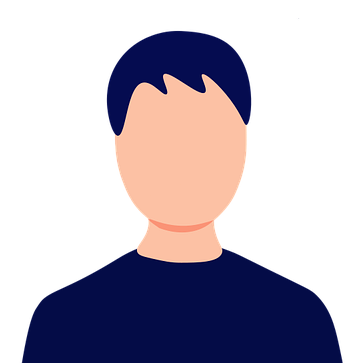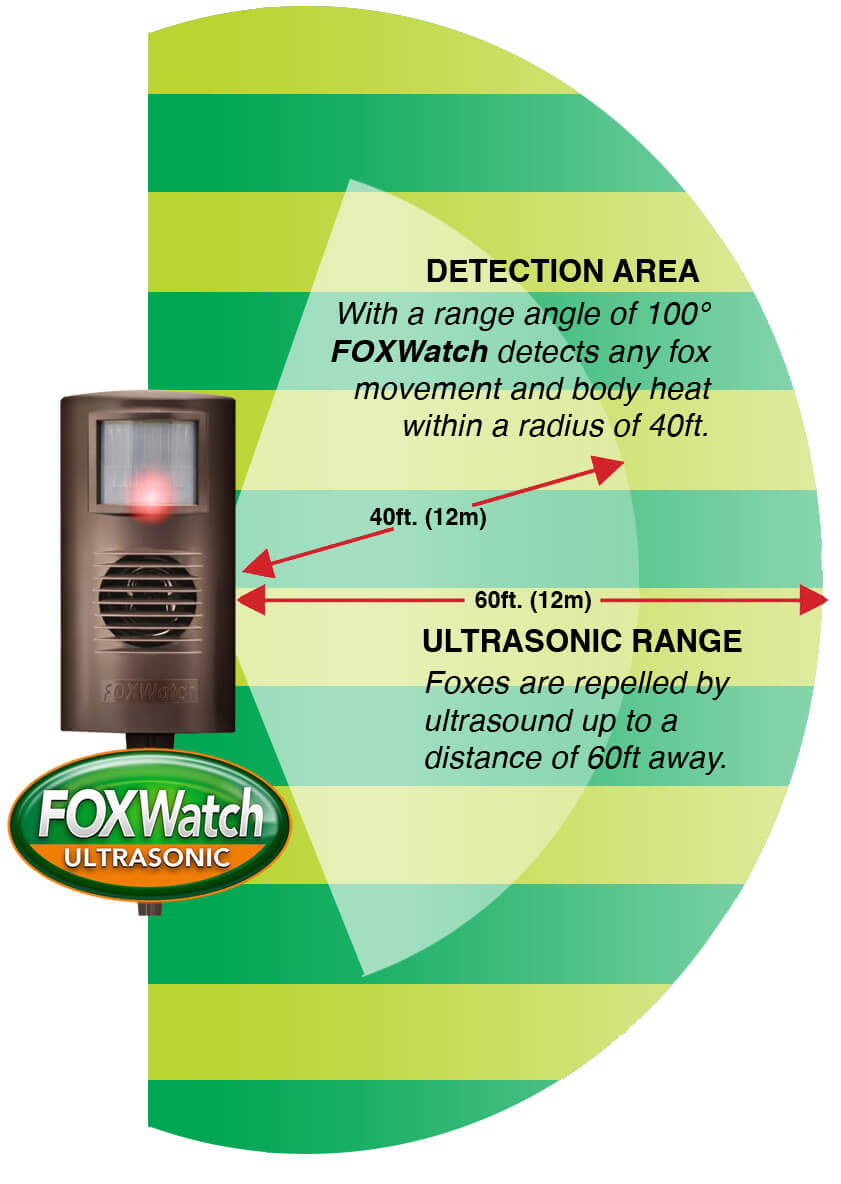Managing Fox Problems in SW19: A Comprehensive Guide for Wimbledon Residents
If you live within the Wimbledon postcode area of SW19, then it’s very likely that foxes visit your garden at some point during the year.
Wimbledon is renowned for its appealing residential areas, lush green spaces, and vibrant community life. However, these attractive features also make it a fantastic living environment for urban foxes, which is why there’s such a large fox population in the area.
For those of you living in SW19 and suffer from foxes causing a nuisance, this article will provide you with information to help you improve the situation in your garden.
Why This Article Was Written
This article was written after analysing over 11 years’ worth of postcodes from customers who purchased the FOXWatch Ultrasonic Fox Deterrent from this website. The most common postcode district among those customers was SW19, confirming what many residents already suspect; Wimbledon has quite a serious fox problem.
If you’ve been dealing with foxes in your garden, you’re not alone. Many SW19 residents experience the same issues, from foxes fouling and digging up lawns to tearing into bin bags or disturbing sleep with their loud screams during mating season. Additionally, there are potential health risks associated with foxes, such as the transmission of diseases like mange and fox tapeworm.
So, why does SW19 have such a significant fox population? We’ll take a look below.
Why Does SW19 Have a Fox Problem?
SW19 offers foxes everything they need to thrive: shelter, food, water, and easy access to urban and natural environments.
1. A High Density of People and Gardens
- According to the 2021 Census, the postcode district of SW19 has a population of just over 80,000 people, meaning a high number of gardens and food sources for foxes to exploit.
- Affluent, well-maintained gardens with sheds, decking, dense undergrowth, and garden offices provide shelter for foxes looking for a safe place to rest.
- Food sources are abundant, including unsecured bins, pet food left outside, discarded BBQ scraps, and even dog chews.
- Water sources are plentiful, with ponds, water features, and irrigation systems providing foxes with hydration, particularly in the warmer months.
2. A Large Number of Green Spaces
Foxes are naturally drawn to green spaces, and Wimbledon is full of them. These areas provide safe daytime shelter, a hunting ground for small mammals and birds, and easy access to nearby gardens.
Some of the most significant green spaces include:
- Wimbledon Common – One of the largest open spaces in London, providing foxes with dense woodland, grassland, and plenty of hiding spots.
- Wimbledon Park – The lake, trees, and open spaces create a perfect habitat for foxes to rest and forage before venturing into nearby streets and gardens.
- Cannizaro Park – A quieter, more secluded green space, ideal for foxes looking for undisturbed shelter close to residential areas.
- Morden Hall Park – A vast National Trust site with wetlands and meadows, offering plenty of food and cover for urban foxes.
- Haydons Road Recreation Ground – A smaller but well-used park that serves as a pathway for foxes travelling between green spaces and homes.
- Wimbledon Common Golf Club & Nature Reserve – A mix of woodland and open fields, giving foxes even more territory to explore and shelter in.
With such an abundance of safe, accessible green spaces, it’s no wonder foxes thrive in SW19 and frequently make their way into residential gardens.
Food Waste in SW19: A Major Fox Attraction
Another factor keeping foxes in and around SW19 is the sheer amount of food waste generated in the area. With a high concentration of cafés, restaurants, fast food outlets, and pubs, not only do foxes have easy access to discarded food scraps, but also to the rats that this waste inevitably attracts.
Some key locations where food waste is high include:
- Wimbledon Town Centre – The Broadway and Wimbledon Hill Road are lined with restaurants and takeaways, creating a consistent food source.
- Wimbledon Village – An upscale dining hub with plenty of outdoor seating, increasing the likelihood of food waste left outside.
- South Wimbledon & Colliers Wood – Areas with a mix of fast food chains, independent restaurants, and markets, all contributing to food availability.
- Raynes Park – Pubs and eateries in this area mean foxes can find food scraps if waste isn’t properly secured.
Where there’s food, there are foxes. These areas act as fox feeding grounds, encouraging them to stay in the area rather than moving on elsewhere.
“The Council’s policy is not to take any action against urban foxes…Managing fox problems is the responsibility of the owner or occupier of the property where the problem occurs.“
Merton Council
Merton Council’s Stance: Don’t Expect Help
Despite the high number of fox complaints across SW19, Merton Council does not take action against urban foxes. Their official response is that foxes are a natural part of the environment and it is up to individual homeowners to deal with them.
Through a Freedom of Information request, the council revealed that:
- They do not log fox complaints separately from other animal-related issues.
- The most common complaint involves residents feeding foxes, with some people even leaving raw chicken out in public spaces.
- In every recorded case, the council’s response was simply “advice given”—no further action was taken.
- Their only recommendation for residents struggling with foxes is to secure perimeter fencing which, as many homeowners know, is rarely enough to keep foxes out altogether.
This means that if you have a fox problem in your garden, you are entirely responsible for dealing with it.
What SW19 Residents Can Do to Keep Foxes Out
Since Merton Council won’t step in, the best way to protect your garden from foxes is to take action yourself. Here’s what you can do:
1. Discourage Feeding
According to our FOI request, neighbours feeding foxes is the number 1 fox-related reason people complained to Merton Council. While it’s often nice to see foxes, they are thriving and don’t need human assistance with food.
The poor foxes can’t distinguish between one neighbour who likes them and the next neighbour who doesn’t. They’ll simply see the general area as a food source and be attracted to it.
If you have a neighbour that feeds foxes, perhaps trying a tactful and diplomatic approach, explaining the problems they’ve been causing in your garden, is the first thing to try. Difficult, but worth a go.
You can also do your bit by not feeding your cat or dog outside, and by using hanging feeders for the birds rather than throwing food scraps onto the lawn.
2. Secure Your Waste
This seems obvious, but foxes are opportunistic scavengers, so it’s an important point. Putting your rubbish in wheelie bins and ensuring the lid is closed properly is the best way to prevent foxes (and cats) from tearing open bin bags.
If you have a recycling box then make sure it’s not overflowing with the lid on tight. Make sure to fully rinse out milk cartons, yogurt pots, raw meat juice or anything else with food remnants to minimise the smell and attraction to foxes.
Recycling boxes are easy pickings for a fox as they are low to the ground and often too full to put the lids on. If you might benefit from getting another box, then do so.
3. Keep Your Garden Tidy
Foxes like long grass, undergrowth and heavy shrubbery as these things provide them with cover and allow them to hide. If your garden is a bit unkempt and could benefit from a cut, trim or a prune, then that’s a quick win in the battle against foxes.
Even if you keep on top of garden maintenance, what about areas that could potentially provide foxes with hidey holes? Under sheds, garages, garden offices or decking are common places that foxes like to shelter. Do what you can to block up access to these areas and try saturating the ground with water so it’s too wet for foxes to get comfortable.
Don’t leave dog chews out overnight and tidy away children’s toys and garden implements. Cuddly toys, gardening gloves and shoes are common targets for young foxes practising their hunting and burying skills, so don’t give them the opportunity!
Further reading: 10 Reasons Foxes Come into Your Garden (And What To Do About It)
4. Use a Humane Deterrent
While there are changes you can make in your garden to improve the situation, using a dedicated fox repellent will help to reduce the problems that the fox has been causing. The most popular humane fox deterrents are listed below with links to further information.
- Scoot Fox Repellent – A clever powder that is diluted with water and sprayed around your garden, Scoot disguises the fox’s own scent when it tries to scent-mark. Foxes scent-mark to establish control of their territory, but if they return to the area and can’t smell their own scent, they get worried a rival is trying to take over the area, causing them to retreat elsewhere.
- Prickle Strips – If digging in flowerbeds or plant pots is a problem, these rows of gridded plastic spikes are very useful. They’re not sharp enough to cause the fox harm, but are uncomfortable for the foxes to put their weight on, stopping them from getting to the soil underneath.
- Citronella-Scented Deterrent – For problem pooing in particular areas of your garden, you can try a scented citronella spray that puts off foxes from returning to that spot. Patios, flowerbeds, driveways, synthetic grass are common targets, so using a scented deterrent may help keep the fox away.
- Ultrasonic Deterrent – A low-maintenance device that lets out high-pitched noises when the fox gets close to it. The noise is annoying to a fox (much like a smoke alarm or car alarm to humans) making it want to not spend time in the area. Ultrasonic devices effectively train the foxes and change their behaviour so the effect becomes better over time. Avoid cheap, solar powered devices as they simply won’t emit a powerful enough noise to have an impact. More details on the British-made FOXWatch Ultrasonic Deterrent are below.
The FOXWatch Ultrasonic Fox Deterrent
For Wimbledon residents seeking an effective solution to persistent fox disturbances, the FOXWatch Ultrasonic Fox Deterrent offers an effective, humane method to reclaim your garden.
How FOXWatch Works
Using an innovative infrared motion sensor, FOXWatch detects the movement of foxes within its range. Upon detection, it emits short bursts of high-pitched noise, inaudible to humans but highly irritating to foxes. This unpleasant experience conditions foxes to associate your garden with discomfort, leading them to avoid the area over time.
Why FOXWatch is Effective
- It emits a high-frequency sound that is unpleasant to foxes but harmless to humans and pets.
- Foxes quickly learn to avoid the area where the deterrent is placed.
- It provides a long-term, non-intrusive solution that allows you to enjoy your garden without unwanted fox visitors.
Why FOXWatch is the Best Choice for SW19 Residents
- 24/7 Protection: FOXWatch operates continuously, providing round-the-clock defence against fox intrusions. As foxes learn to steer clear, you’ll notice a significant decrease in issues like fouling, digging, and plant damage.
- Pet and Wildlife Safe: Unlike chemical repellents, FOXWatch is safe for cats, dogs, small domestic pets and other wildlife, ensuring a harmonious garden environment.
- Cost-Effective and Low Maintenance: Once installed, FOXWatch requires minimal upkeep. There’s no need for repeated applications or replacements, making it a cost-effective long-term solution.
- Built for British Weather: The FOXWatch is manufactured in the UK, designed to cope with the wet British climate. Being able to buy British is an increasingly important consideration for many people purchasing for their homes and gardens.
- Popular Choice in SW19 – Many local residents already use FOXWatch to successfully keep foxes away, with numerous devices already in place across the Wimbledon area.
Easy Installation
Setting up FOXWatch is quick and simple:
- Position the device ideally facing the point at which the fox enters your garden, or the area where it has been causing the most problems.
- Connect it to the included 12 Volt Mains Adapter or insert a 9 Volt battery.
- Switch it on, and it begins working immediately. In less than five minutes, your garden will be equipped with continuous fox protection.
Now when foxes enter your garden, they will trigger the high-pitched ultrasonic noises and will quickly be trained to reduce the frequency and duration of their visits. You’ll notice the improvement as time goes on, so make sure to be patient.
FOXWatch Devices Already in SW19
With SW19’s high fox population, a deterrent like FOXWatch is an essential investment for homeowners looking to keep their outdoor spaces fox-free.
Since 2013, more FOXWatch devices have been sold in SW19 than in any other postcode. Residents across Wimbledon are already using it to keep foxes out of their gardens—now it’s your turn!
Order today and join the many local homeowners taking back their outdoor spaces.
FOXWatch FAQs
Is the FOXWatch safe for use with dogs?
Yes, the FOXWatch is absolutely fine to use with dogs.
A large proportion of people who buy the FOXWatch are actually dog owners worried about the risk of germs from fox poo, their dogs getting agitated when seeing a fox in the garden or the fear of attack, especially on smaller dogs.
After the FoxWatch has been installed and there is a reduction of fox visits to the garden, dog owners tend to feel much more relaxed about letting their dogs into the garden without worrying about germs, agitation or attack.
EXTRA TIP – Dog pee is a great supplementary fox deterrent, so feel free to encourage your dog to pee in areas of your garden where you’ve seen the fox, especially at the point they get in. This introduces a ‘rival scent’ to your garden and, if done on a regular basis, works really well in combination with the noise of the FOXWatch.
Is the FOXWatch safe for use with cats?
Yes, the FOXWatch is absolutely fine for use with cats.
In fact, the scent of foxes in the garden may be causing your cat quite a lot of stress, so the sooner you take steps to keep the fox away, the sooner your cat can relax again.
It’s possible the fox could be making your cat fearful of leaving your house. Some common symptoms include a reluctance to use the cat flap, going to the toilet in the house or going out into the garden nervously and keeping low to the ground, constantly sniffing the floor. It’s also not unheard of for foxes to enter via the cat flap, raid the food bowl and terrify the resident cat in the process!
Installing a FOXWatch will help to reduce the visits of the fox to your garden, in turn reducing the stress levels in your cat and giving it the confidence to use the cat flap and enjoy the garden again.
Will the FOXWatch scare birds from my garden?
No, the FOXWatch doesn’t have any effect on birds and won’t discourage them from coming into your garden.
Foxes have been described as a ‘catlike canine’ for many reasons, including their ability to stalk and catch birds in a similar way to cats.
A reduction in fox visits to your garden may well see an increase in birds visiting as well as spending longer each visit due to decreased fear of a predator (subject to local cats of course!).
EXTRA TIP – If you enjoy feeding the birds, try and avoid throwing kitchen scraps out onto your lawn or patio. The smell of the food will attract foxes and possibly mice and rats as well. Try and stick to birdseed installed in hanging bird feeders or high up out of reach of foxes (and cats). This will be safer for the birds and gives less of a reason for foxes to be tempted into your garden.
Is the FOXWatch safe for use with rabbits/chickens/guinea pigs etc...?
Yes, the FOXWatch is completely fine to use with these small animals and should be considered a must-have deterrent to help protect them.
These small animals are unfortunately very attractive to foxes, so you need to do whatever you can to keep them safe. A FoxWatch can provide an important part of your arsenal to protect your small pets, as would electric fencing or mesh, a quality scented deterrent and using strong and secure cages or pens.
When you have such tempting ‘fox prey’ in your garden, the greater variety of deterrent methods you use, the better.
How do foxes react to the FOXWatch?
When you first install the FOXWatch, foxes are likely to show a great deal of interest in the device. A new object making irritating high-pitched sounds has suddenly appeared in their territory, so they are immediately going to be concerned. Their initial reaction will be to try and work out what this thing is and if they can overpower it.
Foxes staring, sniffing, attacking, pooing or spraying urine on the FOXWatch are very common reactions the first few times they encounter it, so don’t be surprised or worried if you initially see this happening in your garden. These are positive signs and show that the foxes are very concerned about the FOXWatch and are trying to intimidate and establish dominance over it.
It’s important that you leave the FOXWatch in place for at least 30 days (ideally longer) to allow it the time to teach the foxes that this irritation is permanent. It’s through their repeated encounters with the FOXWatch that they learn to associate your garden with the annoying ultrasonic noises. This causes their visits to your garden to get fewer and farther between, with each visit shortening in duration as they find somewhere else to go.
How long does the FOXWatch take to work?
We advise you to use the FOXWatch for at least 30 days to allow for the full deterrent effect to be achieved.
Training a fox to associate your garden with the irritating high-pitched noises is a gradual process, resulting in the fox spending less and less time in your garden as time goes on.
As you’ve already discovered, foxes are very persistent animals so it’s important that you remain patient and allow enough time for this process to take place.
We like to use the phrase ‘a marathon, not a sprint’ in regards to successful fox deterrence. Start with this mindset and you’ll be much happier with your progress!
How many FOXWatch devices do I need?
There’s no right or wrong answer regarding how many FOXWatch devices you should install. This is entirely dependent on your individual situation, garden set up and how severe your fox problem is.
Some questions to ask yourself to help you decide are:
- Do you have fox problems in one area or in multiple areas (e.g. your front/back garden/driveway/down the side etc..)?
- Do you have one fox or multiple foxes visiting?
- Do the foxes enter and exit your garden in one place or in different places?
- Is your garden a regular shape or irregularly shaped (e.g with corners, slopes or tiers/levels)?
Some people only need one FOXWatch to reduce their fox problems, while others require numerous devices to protect all affected areas. You know your garden and the nature of your fox problem best, so ask yourself the questions above and think about what you might need.
If in doubt, start with one FOXWatch and then add more devices later if you feel you need them. We have many people who come back for more once they see the device having a positive impact.
It’s always better to take some sort of decisive action rather than over-thinking it and doing nothing.
What distance does the FOXWatch cover?
The FOXWatch can detect up to 12m (40ft) and covers an unobstructed area of up to 125sqm (1350 sq ft).
Is the FOXWatch weatherproof?
Yes, the FOXWatch is made in Britain and specifically designed to cope with the notoriously wet and windy British climate, as well as the wild temperature fluctuations that it will naturally experience when sat out in your garden
The internal components are made from the highest quality materials and are securely sealed in a waterproof resin to provide the longest possible operating life.
Many cheaper alternatives to the FOXWatch are not made with the wet British weather in mind and are mass-produced (often in China) with much lower quality internal components – naturally shortening the life expectancy of those units.
Of course, in the event of freak weather conditions, such as monsoon-style rain or heavy snowfall, bring the FOXWatch in for a few hours to dry out before setting it to work again. Like anything, the more you look after it, the longer it will last and continue to deter foxes.
Additionally, every FOXWatch comes with a comprehensive 2-year manufacturer’s warranty covering any applicable repairs or replacements required to the unit during that period.
Why do you recommend using the mains adapter rather than a battery?
Because the mains adapter provides 12 Volts into the FOXWatch, rather than 9 Volts from a battery – that’s 33% more power. More power means a louder, more effective noise to deter the fox. Plus you don’t have to worry about replacing a flat battery.
The mains adapter comes with a 10m (32ft) cable. We also stock a 10m extension cable which allows you to install your FOXWatch up to 20m (64ft) away from a plug socket.
Although we recommend using the adapter, we understand it’s not possible for everyone and using a 9V battery in the FOXWatch still provides a very effective fox deterrent. Just make sure it’s a Duracell Alkaline 9 Volt Battery so that you get maximum power and reliability from your FOXWatch.
Many cheaper alternatives to the FOXWatch do not contain a mains adapter and often use rechargeable or solar powered batteries to power the units. These kind of batteries degrade fairly quickly and are unlikely to contain enough charge to provide the powerful noise required to keep foxes out of your garden over the long term.
How long does a battery last?
A 9 Volt Duracell battery will normally last 2 – 3 months. The lights on the FOXWatch will flash to warn you when the battery is running low.
We recommend you use a Duracell alkaline battery rather than cheap brands or rechargeables, as these can quickly degrade and won’t provide enough power to the unit, which in turn means the noise emitted from the unit is less powerful.
If you allow a battery to go completely flat and don’t replace it, the deterrent effect of the FOXWatch will stop.
What’s the big deal about the FOXWatch being made in the UK?
Whilst it’s absolutely important to promote British manufacture, the answer is actually practical rather than political.
The FOXWatch is the only ultrasonic fox deterrent fully designed and manufactured in the UK and each unit is hand-built and quality-control tested before it leaves the plant in Stevenage.
It’s undergone rigorous and extensive trials with British urban foxes, in British gardens and is specifically designed to withstand the British weather.
The cheaper alternatives are generally manufactured in China, which isn’t a problem in itself, but mostly means they have not been tested on the UK’s urban foxes, and are built with lower quality components not capable of lasting as long in our damp and wet climate.
The manufacturer of the FOXWatch provides a comprehensive 2 year warranty and even an additional repair service once the warranty has expired. They have a long history of manufacturing high quality animal deterrents and are very approachable and welcoming of questions or requests for assistance.
Will the FOXWatch protect a large garden/school field/bowling green/tennis court/sports pitch?
The FOXWatch has a massive unobstructed protection area of 125sqm (1350sqft) which is far greater than most other competitors’ coverage.
This makes the FOXWatch suitable for a huge range of environments including small gardens, large gardens, open gardens, playing fields, farms, schools, bowling greens, grass tennis courts and sports pitches.
Many people who have particularly large spaces requiring protection from foxes often purchase multiple FOXWatch units, either placing them in rows at with certain distances between one another or placing them back to back for greater circular protection.
What is the warranty and the guarantee?
All of our FOXWatch units come with a 2 year manufacturer’s warranty which covers repair or replacement in the unlikely event something goes wrong with a unit. We also provide a 90 day money back guarantee. Any returns should be made using the original packaging and please contact us first.
Final Thoughts: The Council Won’t Act—But You Can
Foxes are a permanent part of SW19, and Merton Council has made it clear they won’t take action. If you want to reduce fox activity in your garden, the responsibility is entirely on you as a homeowner.
The good news is that there are effective, humane ways to keep foxes out, by securing food waste, discouraging feeding, and using deterrents like the FOXWatch.
Order the FOXWatch Ultrasonic Fox Deterrent today for just £69.95 . It comes with a 12 Volt mains adapter, full operating instructions, 90-day moneyback guarantee, 2-year manufacturer’s warranty and free UK delivery.











 Photo credit: Concept Research
Photo credit: Concept Research Photo credit: Adam Lowly | Pexels.com
Photo credit: Adam Lowly | Pexels.com

 Photo credit: John Ondreasz - Pixabay
Photo credit: John Ondreasz - Pixabay



